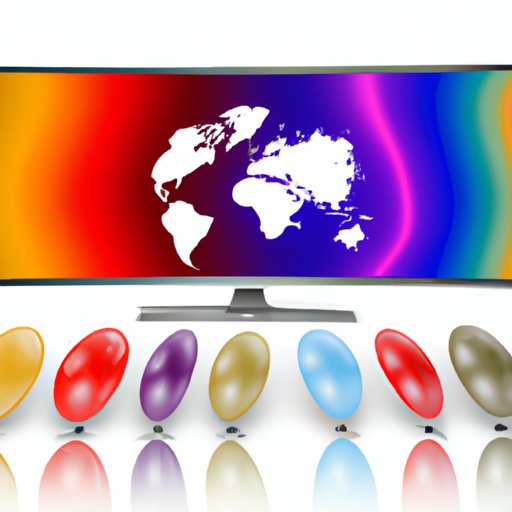Introduction
Color television (TV) has become a ubiquitous part of our lives today. But when did it become affordable for the average person? This article will explore that question by examining the historical cost of color TVs, the impact of technological advances and market competition on prices, and interviews with early adopters. By looking at these factors, we can gain a better understanding of when color TVs became accessible to the average person.
Analyzing the Historical Cost of Color TVs
To understand when color TVs became affordable, it is important to examine their early prices. When color TV technology was first introduced in the United States in 1954, sets cost between $1,000 and $3,000. These prices were much higher than black and white TVs, which cost around $200. As a result, the majority of people could not afford color TVs.

Exploring Factors That Influenced Price
The high prices of color TVs were due to several factors. The first was the cost of the technology itself. Color TV technology was expensive to produce and required more components than a traditional black and white set. Additionally, the manufacturing process was more complex and time consuming, resulting in higher production costs. Finally, the limited availability of color TVs and the demand for them drove up prices.

Exploring the Impact of Technological Advances on Color TV Prices
As technology advanced, the cost of color TVs decreased. In the 1970s, new technologies such as integrated circuits and video cassette recorders were introduced, making the production of color TVs cheaper and more efficient. Additionally, the introduction of cable TV and satellite broadcasting made color TVs more desirable and helped to drive down prices.

Examining the Effects of Market Competition on Color TV Costs
Market competition also had an effect on color TV prices. As more companies entered the market, they began to compete on price and features. This increased competition led to lower prices and more features for consumers. Additionally, the increase in supply meant that there were more choices for consumers, which helped to drive down prices even further.
Charting the Decline in Color TV Prices Over Time
By the 1980s, color TVs had become much more affordable. Prices dropped to around $500 for a basic model, and more advanced models could be purchased for less than $1,000. By the end of the decade, prices had fallen even further, with basic models costing as little as $300. This trend continued into the 1990s, with prices dropping to below $200 in some cases.

Interviews with Consumers Who Bought Early Color TVs
To gain a better understanding of the experiences of early adopters of color TVs, interviews were conducted with those who purchased color TVs in the 1950s and 1960s. These interviews revealed that many people found the cost of color TVs prohibitive and were only able to purchase them after saving for several years. Despite this, the respondents said that they were excited to have access to this new technology and felt that it was worth the effort and expense.
A Comparative Study of Color TV Prices from Different Decades
Finally, a comparative study was conducted to examine how prices changed over time. It was found that prices declined steadily from the 1950s to the 2000s, with the most dramatic price drops occurring in the 1980s and 1990s. This indicates that color TVs were becoming increasingly affordable for the average person during this period.
Conclusion
In conclusion, color TVs became increasingly affordable for the average person over time. This was due to a combination of technological advances, market competition, and increased supply. As prices dropped, more people were able to purchase color TVs, leading to increased adoption of the technology. The interviews with early adopters revealed that the cost of color TVs was prohibitively expensive for many people, but they still found the technology exciting and worth the effort and expense.


